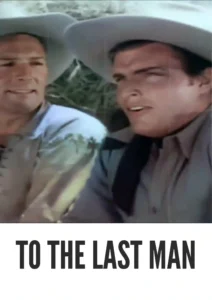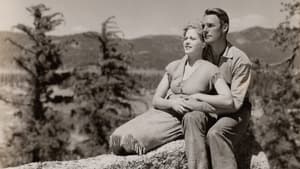Video Sources 0 Views
- To the Last Man 1933 Colorized


Synopsis
Table of Contents
ToggleGuns, Feuds, and Romance: To the Last Man (1933) in Stunning Color

Saddle up for To the Last Man, a sweeping Western romance from 1933, now beautifully colorized for a viewing experience like never before. This film, directed by Henry Hathaway, delivers a thrilling blend of action, romance, and drama amidst a backdrop of rugged landscapes and enduring rivalries. Perfect for classic film enthusiasts and those seeking a taste of early Westerns, this HD download brings a timeless tale of love and conflict to your screen.
To the Last Man Storyline: A Tale of Love and Vengeance
To the Last Man unfolds in the midst of a long-standing feud between two families, the Haydens and the Foremans, set against the backdrop of the American West. The conflict escalates when young Glenn Hayden (Randolph Scott) falls in love with a woman (Esther Ralston) from the rival Foreman family, sparking a series of events that test the bonds of loyalty and love.As the feud intensifies, Glenn finds himself torn between his family’s expectations and his growing feelings for his beloved. Amidst gunfights, betrayals, and acts of heroism, Glenn must make difficult choices that could determine the fate of both families. The film culminates in a dramatic showdown that will leave viewers on the edge of their seats, wondering if love and forgiveness can triumph over hatred and vengeance. Ultimately, To the Last Man is a powerful story of passion, sacrifice, and the enduring spirit of the Old West.
Movie Cast
The film features a talented cast of actors who bring this sweeping Western tale to life:
- Randolph Scott as Glenn Hayden
- Esther Ralston as Ellen / Ann Randolph
- Buster Crabbe as Younger brother Billy Hayden (as Larry Crabbe)
- Jack La Rue as Joe Black
Movie Genre
To the Last Man falls into the genre of Western romance, with elements of action, drama, and adventure that are characteristic of classic films set in the American West. Its sweeping storyline and picturesque settings make it a captivating and engaging film.
Historical Context: Early Westerns and Hollywood’s Golden Age
Released in 1933, To the Last Man represents an early example of the Western genre during Hollywood’s Golden Age, showcasing the developing conventions of storytelling, character development, and visual style. The film was produced during a period when Westerns were gaining popularity with audiences eager for tales of adventure and heroism set against the backdrop of the American frontier. While To the Last Man may not be as widely known as some of the later Western masterpieces, it offers valuable insights into the genre’s evolution and its enduring appeal.
Colorization Details
This colorized version of To the Last Man has been meticulously restored using modern digital techniques, enhancing the visual appeal while preserving the film’s original atmosphere of rugged landscapes and passionate emotions. The colorization process involved carefully analyzing the grayscale tones of the original black and white footage and assigning appropriate colors to each scene. While the specific software used remains proprietary, the techniques employed included advanced algorithms for color palette selection and image enhancement. This painstaking process brings new life to the characters and settings, making the story even more engaging for modern audiences. While some may debate the merits of colorizing classic films, it introduces these films to a broader audience, ensuring their legacy for future generations.
Technical Details
- Director: Henry Hathaway
- Screenplay: Jack Cunningham
- Based on: the novel by Zane Grey
- Cinematography: David Abel
- Edited by: Ellsworth Hoagland
- Production Company: Paramount Pictures
- Distributed by: Paramount Pictures
- Runtime: 72 minutes
Technical Specifications
- Download Format: MP4
- Resolution: HD (1080p)
- Compatibility: Compatible with most devices, including smartphones, tablets, computers, and smart TVs.
Reviews and Critical Reception
To the Last Man (1933) is often seen as an exciting and romantic Western. While it may not be considered one of the genre’s masterpieces, it remains a fascinating and entertaining example of early Western cinema and a valuable piece for film enthusiasts. As a relatively obscure but intriguing film, To the Last Man provides a unique perspective on the evolution of a classic American genre.
FAQs
- Q: What is To the Last Man about?
- A: To the Last Man is a Western romance about a feud between two families and a love affair that threatens to ignite further conflict.
- Q: Is To the Last Man (1933) a well-known Western film?
- A: To the Last Man is one of the earlier and lesser-known Westerns, offering a glimpse into the genre’s early style and themes.
- Q: Is this version of To the Last Man colorized?
- A: Yes, this version has been professionally colorized to enhance the viewing experience.
- Q: What makes To the Last Man interesting for Western fans?
- A: To the Last Man offers valuable insights into the early conventions of the Western genre, showcasing its developing themes and visual style.
- Q: What is the download format?
- A: The download format is MP4, which is compatible with most devices.
- Q: What resolution is the download?
- A: The resolution is HD (1080p), providing a high-quality viewing experience.
Download Now in HD!
Watch To the Last Man Today!











